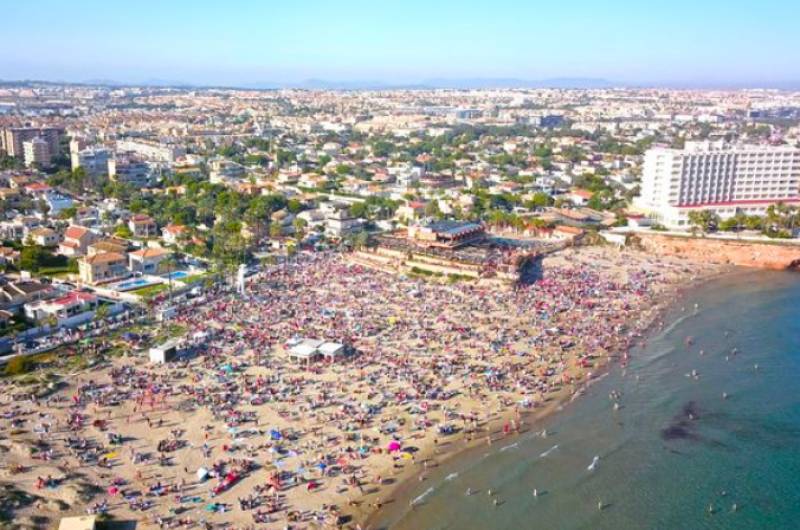
To be listed on the CAMPOSOL TODAY MAP please call +34 968 018 268.
La Torre of Torre de la Horadada
The watchtower in Torre de la Horadada, Pilar de la Horadada
 The tower which gives its name to the beach town of La Torre de la Horadada was built in 1591 on a rocky outcrop which juts out into the Mediterranean.
The tower which gives its name to the beach town of La Torre de la Horadada was built in 1591 on a rocky outcrop which juts out into the Mediterranean.
It’s located on the southernmost tip of the municipality in Torre de la Horadada and now overlooks the marine port below on one side and the Playa del Conde on the other.
Circular in design, it was erected as a watchtower to warn the local population of approaching raiders from the north of Africa. As such it formed part of a chain of such defensive structures along the coast of south-east Spain, on the top of which beacons were lit when pirate ships were spotted.
The whole of this southern coast of Spain suffered from Berber pirate attacks from the 13th to early 17th centuries. Southern Spain was occupied by Moorish invaders from Africa in 712 AD, and they remained in power until the middle of the 13th century when the Christian forces of the Reconquist from northern Spain pushed them into Granada.
Although some remained in their homes and accepted Christian rule, others rebelled and were expelled from the country, becoming pirates and attacking the Christian settlements from sea. Those who refused to accept the new rulers either left or went to Granada where they remained until 1492 when the combined forces of Isabella and Ferdinand expelled them from Spanish soil altogether.
 Thousands of Muslims who refused to convert to Christianity ( or at least pretend to) were expelled, losing their homes and livelihoods. Piracy was an easy option and this coastline was harassed by pirate raids, stealing crops, livestock and even people, who were ransomed or sold as slaves. Many coastal areas remained depopulated, due to the ever present threat of piracy.
Thousands of Muslims who refused to convert to Christianity ( or at least pretend to) were expelled, losing their homes and livelihoods. Piracy was an easy option and this coastline was harassed by pirate raids, stealing crops, livestock and even people, who were ransomed or sold as slaves. Many coastal areas remained depopulated, due to the ever present threat of piracy.
When the Berber pirate threat receded many of the watchtowers fell into disuse and eventually disappeared, but this one survived in good condition, perhaps due to the tradition that it marked the southernmost point of the Kingdom of Valencia. Indeed, even in modern times, it is only about one kilometer from the border of the Comunidad Valenciana with the Region of Murcia.
In the 19th century it was used to send and receive optical telegraph or semaphore messages, but by 1905 it had become part of a residential palace used by the Counts of Roche: the rest of the residence backs onto the tower itself. Nowadays the tower has been awarded the status of Item of Cultural Interest.
Despite having been restored and altered many times over the centuries, the tower still retains the same basic structure as when it was built, and whereas in the past its location was perfect for scouring the horizon in search of approaching invaders, nowadays it looks out over the seaside town which has grown up around it, and the inland settlement of Pilar to which it has given its name.
To see the full history of the area click History of Pilar de la Horadada
There is parking nearby for the sporting port, although the tower is not open for public visits.
































